High-volume steel mills across Indonesia are the engines of the nation's growth. You invest millions in state-of-the-art slitters and production equipment to create top-quality steel coils. But after all that effort, the final step—packaging—often becomes a critical bottleneck. You might be seeing coils pile up, your workforce struggling to keep pace, and the constant worry of product damage during shipping. This final, crucial stage can undermine your entire operation's efficiency and profitability. What if you could transform this vulnerability into a competitive advantage? Imagine a seamless, automated process that not only keeps up with your production speed but also enhances product protection, improves safety, and provides valuable data for your entire operation.
A slit coil packing line is crucial for Indonesia’s high-volume steel mills because it solves the critical "last mile" problem of production. It automates a slow and labor-intensive process, ensuring that the high-speed output from slitting lines is packaged safely, consistently, and efficiently. This prevents bottlenecks, reduces costly product damage, and ultimately protects the mill's profitability and reputation in a fiercely competitive market.
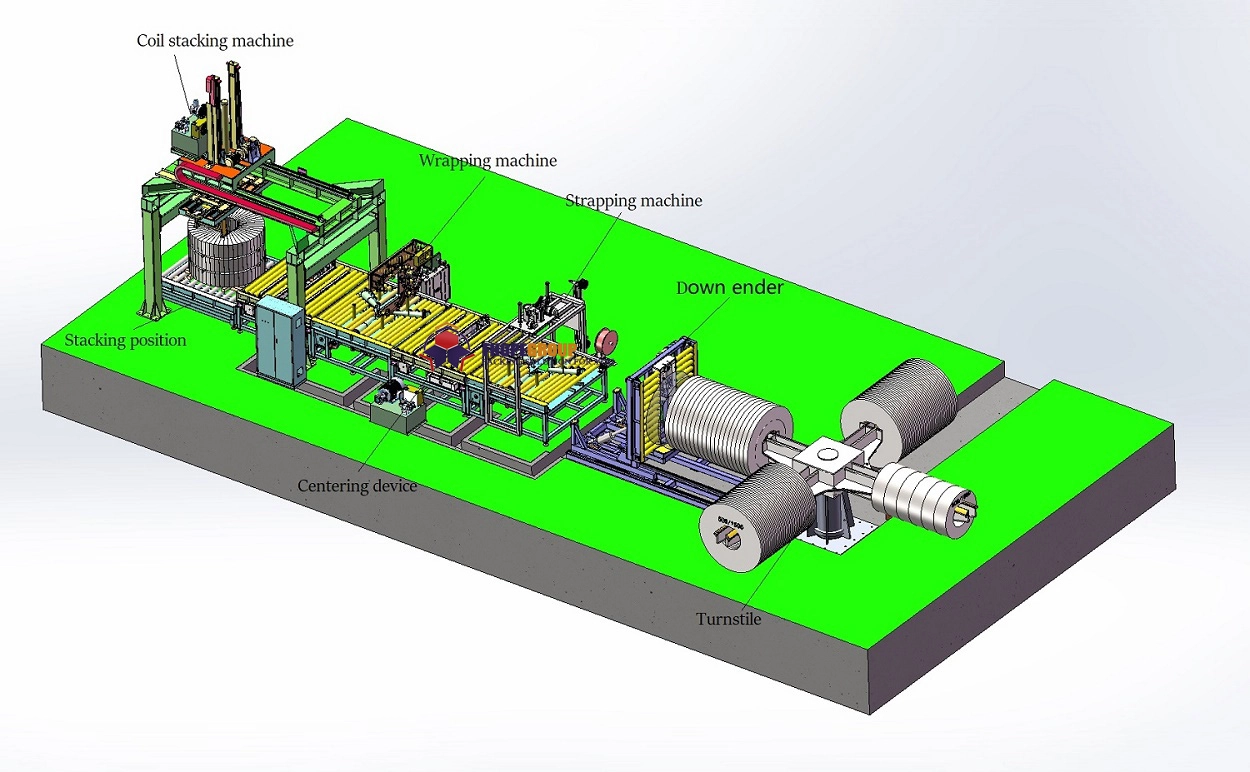
Throughout my career, I've visited countless steel mills. I started on the factory floor and eventually built my own packing machine factory. I've seen firsthand how mills pour resources into boosting production, only to be let down by an inefficient packaging process at the very end. The frustration is real. It's like building a powerful race car but fitting it with bicycle tires. You're never going to reach your full potential. That's why I'm so passionate about this topic. It’s not just about a machine; it’s about providing a total solution that unlocks the true capacity of your mill. Let's break down the specific challenges that a modern packing line solves and how it becomes a strategic asset for your business.
How Can an Automated Packing Line Tackle Rising Labor Costs and Inconsistency in Indonesia?
You rely on a team of workers to wrap and strap every slit coil that comes off the line. It's a tough, repetitive job. Workers get tired, and with fatigue comes inconsistency. One coil is wrapped tightly, the next is too loose. The cost of this manual labor is not just in salaries; it's in the constant need for supervision, training, and the high turnover rate for such demanding jobs. This inconsistency leads to real problems down the line—scratched surfaces, rusty edges from poor wrapping, and customer complaints that damage your reputation. An automated packing line offers a direct solution, working 24/7 with a level of precision and endurance that is simply not humanly possible.
An automated packing line tackles rising labor costs and inconsistency by replacing repetitive manual tasks with precise, machine-driven processes. This significantly reduces the number of operators needed per shift and minimizes the potential for human error. It ensures every single coil is packed to the exact same high standard, directly lowering your labor expenses and eliminating the hidden costs associated with inconsistent quality.
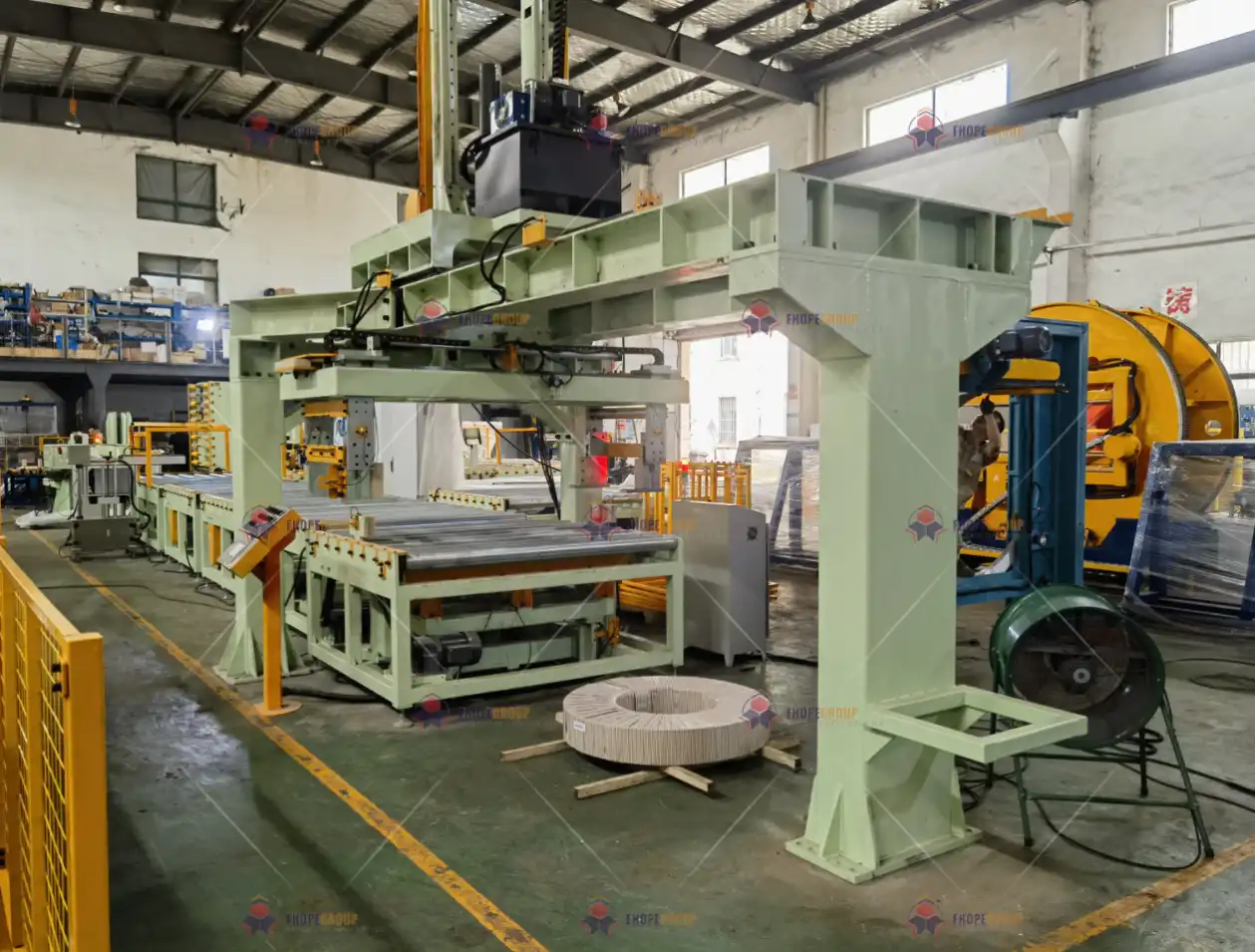
The True Cost of Manual Packing
When we think about the cost of manual labor, we often just look at wages. But as a steel mill owner, you know the true cost is much higher. It's a combination of direct and indirect expenses that add up quickly. I remember a client who was struggling with this. He was focused on the hourly wage of his packing team but didn't see the bigger picture. We sat down and broke it down together. The direct costs were obvious: salaries, benefits, and training. But the indirect costs were the ones really hurting his business. Inconsistent wrapping led to a 5% product rejection rate from one of his key customers. The costs of rework, return shipping, and customer discounts were eating into his profit margin. On top of that, safety was a major concern. The manual handling of heavy coils led to several minor injuries, causing lost workdays and a drop in team morale.
Here is a simple breakdown comparing the two approaches:
| Cost Factor | Manual Packing | Automated Packing Line |
|---|---|---|
| Direct Labor | High (Multiple workers per shift) | Low (One supervisor for the line) |
| Consistency | Low (Varies by worker and fatigue) | High (Identical wrapping every time) |
| Product Damage | Higher Risk (Inconsistent tension) | Minimal Risk (Controlled application) |
| Worker Safety | High Risk (Lifting, sharp edges) | Low Risk (Automation handles heavy tasks) |
| Training Costs | Ongoing (High employee turnover) | Minimal (After initial setup) |
| Overall Speed | Slow (Limited by human pace) | Fast (Matches production output) |
By automating, you are not just replacing a worker with a machine. You are addressing all these hidden costs at once. You are investing in a system that delivers predictable, high-quality results every single time, freeing up your valuable human resources for more complex, value-added tasks within the mill.
How Automation Drives Consistency
In the steel industry, consistency is quality. Your customers expect every coil they receive to be in perfect condition. An automated packing line is engineered for this exact purpose. The system uses sensors to precisely position the coil. The wrapping head then applies the packing material—whether it's VCI paper for rust prevention or stretch film for stability—with the exact same tension and overlap on every rotation. This is something even the best manual worker cannot replicate over an eight-hour shift.
I once worked with a mill in Southeast Asia that produced high-grade steel for the automotive industry. Their biggest challenge was "edge rust." During sea transport, moisture would creep into the loosely wrapped packages and corrode the valuable slit edges. They tried everything—more workers, different materials, extra supervision. Nothing worked consistently. We installed a packing line with a precise wrapping shuttle that spiraled VCI paper tightly around the coil, ensuring a complete, hermetic seal. Within three months, their customer complaints about edge rust dropped to zero. Zero. That is the power of engineered consistency. It protects the product, secures your relationship with your clients, and ultimately defends your bottom line. This isn't just an operational improvement; it's a strategic move to guarantee the quality you worked so hard to produce.
What Impact Does a Modern Packing Line Have on Throughput and Meeting Market Demand?
Your slitting line is running at full speed, producing coils efficiently. But then you look at the end of the line, and you see a growing mountain of finished coils waiting to be packed. This bottleneck is a common and frustrating problem. It chokes your entire production flow. This pile-up means your expensive slitting line has to slow down or even stop, killing your plant's overall efficiency. You can't react quickly to urgent customer orders, and you struggle to manage the fluctuating demands of the market. What if you could eliminate this bottleneck completely and create a smooth, continuous flow from production to dispatch?
A modern packing line directly impacts throughput by creating a seamless, high-speed flow from production to dispatch. It is designed to match or exceed the speed of your slitting line, eliminating the end-of-line bottleneck and allowing your production equipment to run at its optimal capacity. This increased velocity enables your mill to respond agilely to fluctuating market demands and significantly improve your overall capacity utilization rate.
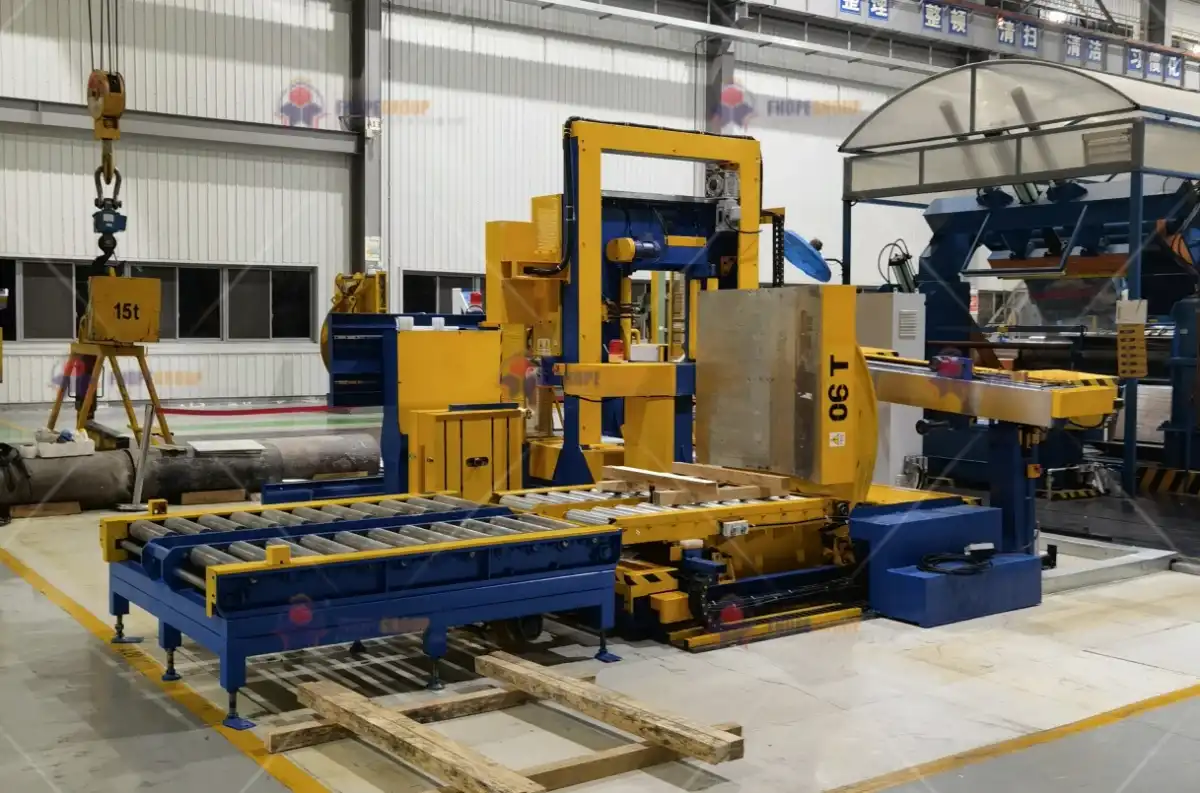
Calculating the Bottleneck Cost
As an engineer, I like to look at things in terms of numbers. The cost of a bottleneck is not just a feeling of frustration; it's a measurable loss. Let's do some simple math. If your slitting line produces 10 coils per hour, but your manual packing team can only handle 6 coils per hour, you have a problem.
(Slitter Output) - (Packing Output) = Bottleneck Rate
10 coils/hour - 6 coils/hour = 4 coils/hour piling up
After just one 8-hour shift, you have 32 coils sitting on the floor, taking up valuable space and creating a safety hazard. This forces your production manager to make a difficult choice: either stop the slitting line periodically or pay for an expensive overtime shift for the packers. Both options hurt your profitability. An automated line designed for your throughput changes this equation entirely. If the line can pack 12 coils per hour, the bottleneck disappears.
(Slitter Output) - (Packing Output) = Capacity Headroom
10 coils/hour - 12 coils/hour = +2 coils/hour of extra capacity
Now, you not only keep up, but you have extra capacity to handle surges in production or clear existing backlogs. This is how you move from being reactive to being proactive, and it's a key step towards achieving a higher capacity utilization goal.
From Production Pile-Up to Just-in-Time Dispatch
An integrated packing line is more than just a wrapping machine. It is a complete system designed for flow. The process is a smooth, automated sequence. First, a coil car or turnstile receives the coil from the slitter. A downender then safely and gently places the coil onto the conveyor line. The coil moves automatically to the wrapping station, where it is centered and wrapped. After wrapping, it can proceed to an automatic strapping station, a weighing station, and finally to a stacking unit that prepares the coils for pickup by a forklift. The entire process is synchronized.
Here’s a comparison to illustrate the impact on your operations:
| Metric | Manual Packing | Integrated Packing Line |
|---|---|---|
| Coils per Hour | 5-8 | 15-25+ |
| Labor per Line | 3-4 Operators | 1 Supervisor |
| Process Flow | Stop-and-Go, Disjointed | Continuous, Synchronized |
| Floor Space | Large area for coil pile-up | Compact, linear footprint |
| Response to Orders | Slow, requires planning | Fast, can handle urgent orders |
When I first started my own factory, this was one of the core principles I built my designs around: flow. A packing line should not be an obstacle; it should be a bridge between your production and your logistics. By creating this bridge, you enable a "just-in-time" dispatch environment. You can confidently promise your customers shorter lead times because you know your packing process can handle the speed. This level of operational agility is a powerful competitive advantage in the Indonesian steel market.
How Does an Integrated Packing Line Enhance Safety and Reduce Product Damage?
The area around the slitting line is one of the most hazardous places in a steel mill. Manually lifting, moving, and strapping heavy coils with sharp edges poses a constant risk to your workers. A single slip or mistake can lead to a serious injury, resulting in downtime, investigations, and a negative impact on your company's safety record. At the same time, every time a coil is handled manually, there's a risk of product damage—dents from chains, scratches from improper handling, or crushed edges. A solution is needed that protects both your people and your products.
An integrated packing line enhances safety by automating the most hazardous tasks, such as lifting, moving, and strapping heavy steel coils. This drastically reduces the risk of worker injury. Simultaneously, its controlled and precise handling, often using soft-touch materials like polyurethane rollers, minimizes scratches, dents, and edge damage, ensuring the product's value is preserved from the factory floor all the way to the customer.
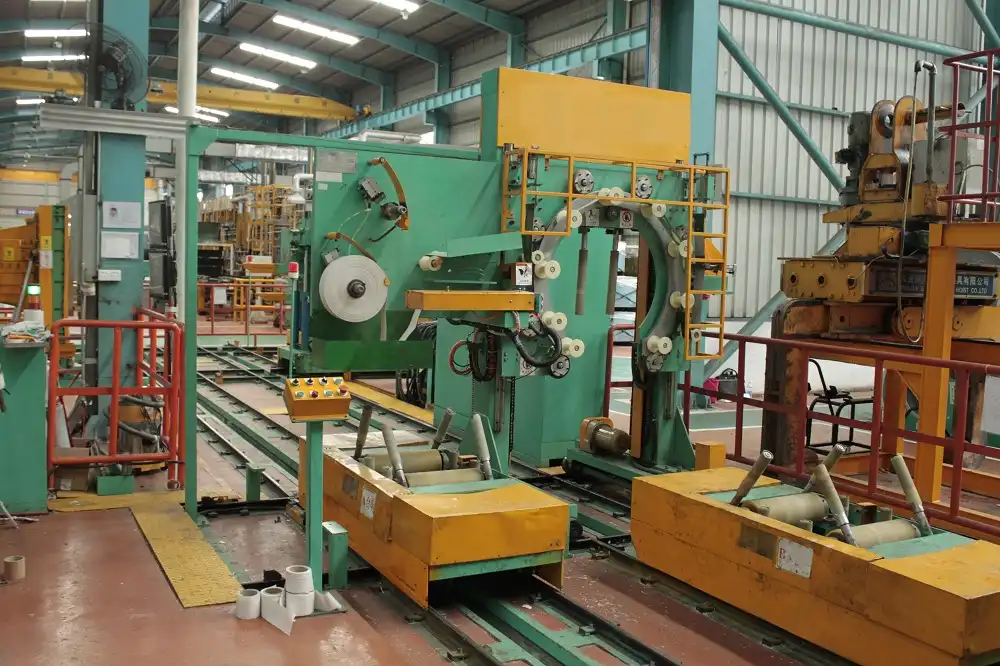
The Danger Zone: A Breakdown of Manual Risks
I have walked through hundreds of factories, and the packaging area always makes me hold my breath when it's done manually. The risks are very real and should never be underestimated. We are not talking about minor paper cuts. We are talking about life-altering injuries. The most common risks include:
- Deep Lacerations: The edges of a slit coil are literally as sharp as razors. A moment of inattention while handling strapping or wrapping material can lead to severe cuts.
- Back and Strain Injuries: Steel coils are heavy. Even with lifting aids, workers are often required to push, pull, and position coils, leading to chronic back pain and acute muscle strains.
- Crush Injuries: This is the most serious risk. A coil that is improperly secured can tip over, or a chain sling can fail, leading to devastating crush injuries for anyone nearby.
- Repetitive Stress Injuries: The constant, repetitive motions of wrapping and banding coils take a toll on the body over time, leading to conditions like carpal tunnel syndrome.
An automated system removes your team from this "danger zone." The machine does the heavy lifting, the turning, and the banding. Your operator's role shifts from manual laborer to a skilled supervisor, managing the process from a safe distance behind a control panel and safety fencing. This is a fundamental change in your approach to workplace safety.
Engineering for Protection: Product and People
A well-designed packing line is built with a dual purpose: protecting the coil and protecting the operator. It’s about smart engineering. For product protection, we use features like polyurethane-coated rollers and conveyor belts. This soft but durable material prevents any metal-to-metal contact, eliminating the risk of scratches on the coil's surface. Automatic centering devices ensure the coil is perfectly aligned before wrapping, which prevents edge damage during the process.
For people protection, modern packing lines are enclosed with safety fences and light curtains. If a person breaks the light beam during operation, the entire line immediately and safely stops. All moving parts are guarded. Emergency stop buttons are placed at multiple strategic locations. This creates a safety-first environment that is simply not possible with a manual process.
I believe that investing in safety is one of the best ROIs a company can make. It goes beyond just complying with regulations. A safer workplace leads to higher morale and better employee retention. It reduces the financial and operational disruption caused by accidents. When you present your mill to potential high-value clients, being able to show them a clean, safe, and automated packing area speaks volumes about your commitment to quality and professionalism. It shows you care about your people as much as you care about your product.
Why is a Packing Line a Strategic Investment, Not Just a Cost, for Digital Transformation?
Many steel mill owners I speak with initially view a packing line as a "necessary evil"—a simple machine and a cost center at the end of the production process. They are focused on digital transformation projects like implementing MES and using IoT sensors on their main production lines. But they often overlook the critical role that the final packing stage can play in their smart factory vision. By seeing it as just a cost, you miss a huge opportunity. Your production data effectively stops at the slitter, creating a blind spot in your inventory and logistics data.
A packing line is a strategic investment for digital transformation because modern systems are intelligent, connected assets. They are equipped with sensors and communication capabilities that integrate directly with a mill's Manufacturing Execution System (MES) or ERP. This transforms the packing line from a standalone machine into a crucial data collection point, providing real-time, actionable information for every coil you ship, enabling complete product traceability, and fueling data-driven decisions.
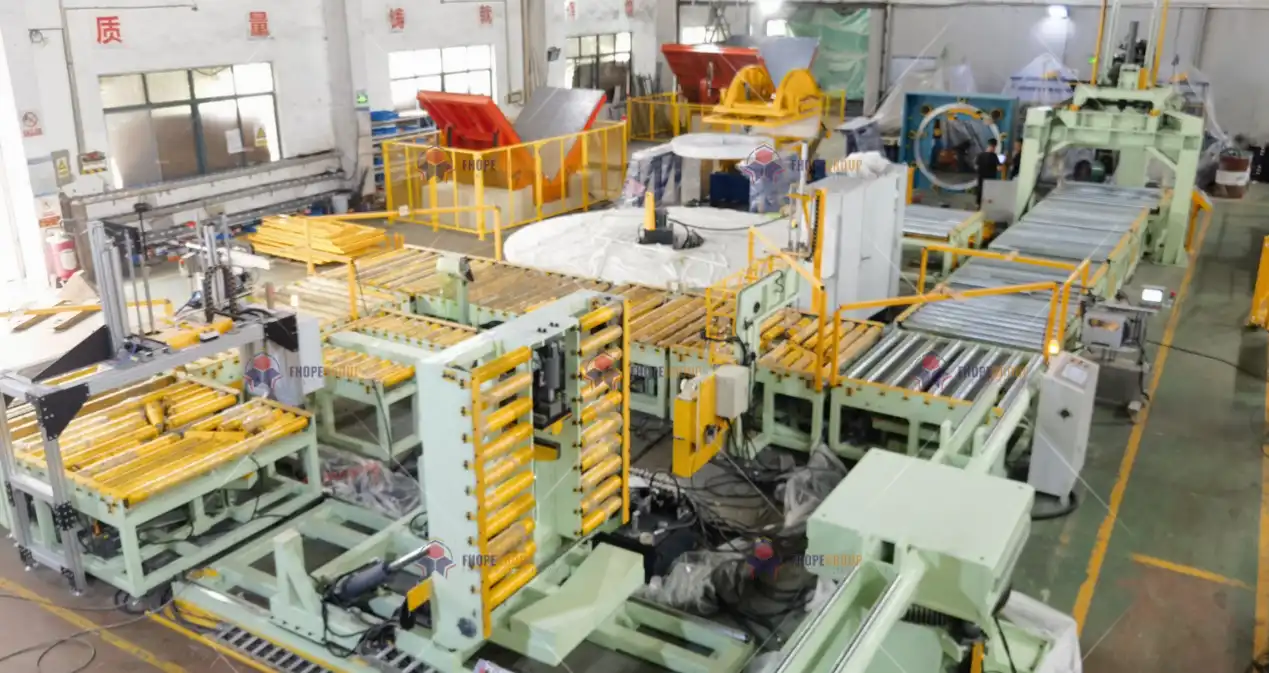
From "Dumb" Machine to "Smart" Asset
The old way of thinking is that a packing machine just wraps things. It's a "dumb" machine that performs a single, physical task. But this mindset is outdated. I've dedicated my work at SHJLPACK to changing this perception. Today's packing line is a "smart" asset. It's a robotic system with a brain. It can be equipped to do so much more than just wrap. It can weigh the coil before and after packing to calculate the exact weight of the packaging materials used. It can automatically print and apply a detailed label with a unique barcode or QR code. It can communicate. This ability to collect and transmit data is what makes it a strategic part of your digital transformation journey.
Think of it as the final checkpoint in your quality and production control. It's the last point where you have physical control of your product before it leaves your facility. By making this checkpoint intelligent, you close the loop on your production data, creating a complete digital history for every single coil.
Integrating the Packing Line into Your Digital Ecosystem
The true power is unlocked when this smart asset is connected to your central factory systems. This is where the magic happens. The data from the packing line doesn't just sit in the machine; it flows into your MES, ERP, and logistics platforms, where it can be used to make smarter business decisions. This integration is something I work on closely with my clients, ensuring the solution fits their specific digital strategy.
Here’s a practical look at how this integration creates value:
| Data Point from Packing Line | Integrates With | Business Impact |
|---|---|---|
| Coil ID + Final Weight | ERP / Accounting System | Generates perfectly accurate invoices automatically. Eliminates billing disputes over weight. |
| Packing Timestamp | MES / Logistics Platform | Provides real-time visibility of finished goods inventory. Enables accurate delivery time estimates for customers. |
| Packing Material Used | Inventory Management System | Tracks consumption of stretch film, VCI paper, etc. Can trigger automatic re-ordering when stock is low. |
| Operator ID + Shift Info | HR / Operations System | Tracks productivity per shift and provides data for performance analysis and process improvement. |
| Coil Destination Data | Warehouse Management (WMS) | Automatically directs forklift operators where to store the finished coil, optimizing warehouse space. |
For a CEO like Javier, who has a clear goal to deploy MES and IoT platforms, this is not just an added benefit—it is essential. The packing line becomes a key sensor in his overall production ecosystem. It provides the granular data needed to achieve comprehensive production visualization. This data helps identify inefficiencies, track costs with incredible accuracy, and ultimately supports the goal of lowering overall operating costs. It transforms the packing line from an operational necessity into a strategic driver of profitability and intelligence.
Conclusion
A slit coil packing line is not just about wrapping steel. It is about boosting your mill's efficiency, guaranteeing product quality, and ensuring worker safety. It is a critical investment for any forward-thinking Indonesian steel mill aiming for leadership in a competitive market.





